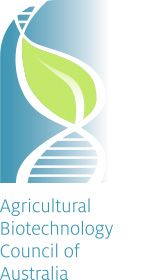Scientists crack difficult wheat genome
29 November 2012. Source: www.abc.net.au/science/articles/2012/11/29/3643435.htm?topic=tech&WT.svl=healthscience2
The genome of the bread wheat, whose DNA is notoriously complex, is close to being completed, according to an international team of scientists.
Publishing in the journal Nature, they say they had analysed between 94,000 and 96,000 genes in bread wheat (Triticum aestivum).
According to the paper, the plant’s genome is nearly five times as big as humans.
The genes exist in what is in fact a triple genome, reflecting bread wheat’s legacy as the 8000-year-old offspring of three species of grasses.
Gene sequencing will help plant breeders in their search for strains that offer higher yields and are better able to tolerate floods, droughts and salty soils, the researchers said.
Wheat today accounts for a fifth of the world’s calorific intake, and this importance can only grow, given the world’s rising population and the impact of climate change on food production, say experts.
“This work moves us one step closer to a comprehensive and highly detailed genome sequence for bread wheat, which along with rice and maize is one of the three pillars on which the global food supply rests,” says co-author Jan Dvorak, a professor of plant sciences at the University of California at Davis.
“The world’s population is projected to grow from seven to nine billion by 2050,” says Dvorak.
“It is clear that, with no new farmable land available to bring into cultivation, we must develop higher-yielding varieties of these three cereals to meet the growing global demand for food.”
A complete, “polished” version of the genome may still lie several years away, says Neil Hall of the University of Liverpool, England, which led the research.
Although the genome has not been fully decoded, we now have instrumentation that can read DNA hundreds of times faster than the system that were used to sequence the human genome,” which was published in 2001, he says.

